5 ways this historic Welsh garden showcases country style
The epitome of a British garden, all the elements are here to see in this spectacular listed Arts and Crafts house in the UK
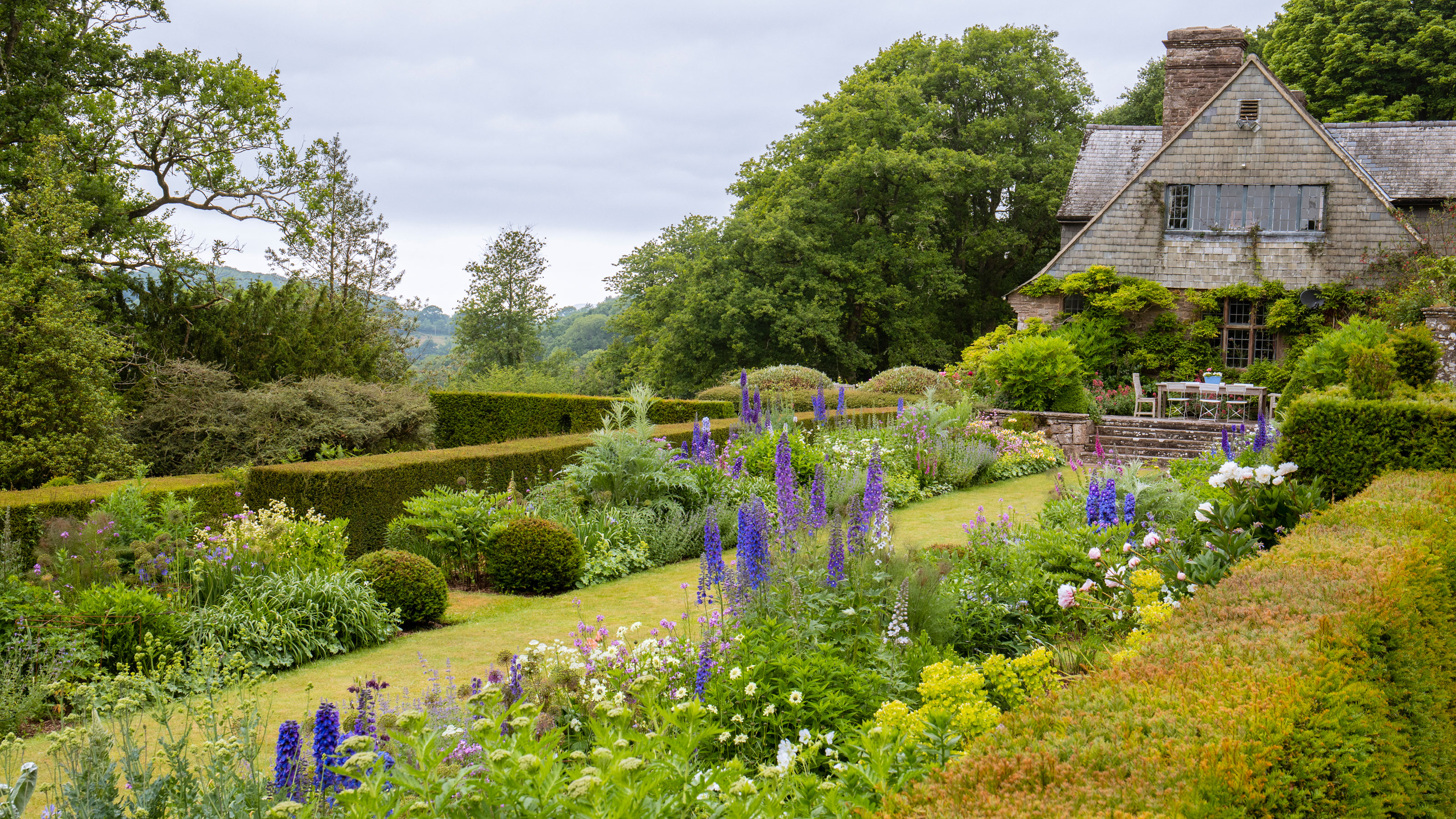

Do you love British country garden style? There can be no more blissful place to admire this look than at High Glanau Gardens in the UK’s Monmouthshire countryside.
Looking down over the stone terraces frothing softly with ebullient summer planting, and out across the far-reaching views of the surrounding, it’s a little pocket of paradise. It’s also the perfect example of how to get country garden style.
This listed Arts and Crafts house and garden, and its exceptional panorama over the vale to the Brecon Beacons, instantly captivated Helena Gerrish and her husband Hilary when they came to view the property in 2001. The couple – he a fine art dealer and she a home maker - already lived in the area, in a rambling old vicarage, and were house hunting when High Glanau came on the market.
‘We saw it on the most glorious autumn day,’ says Helena. ‘There was a bright blue sky and all the trees were changing color. We stood on the terrace and saw that view, and thought it was absolutely beautiful.’
Here's how Helena achieved her country garden style...
1. It rediscovers the original garden design of 1923
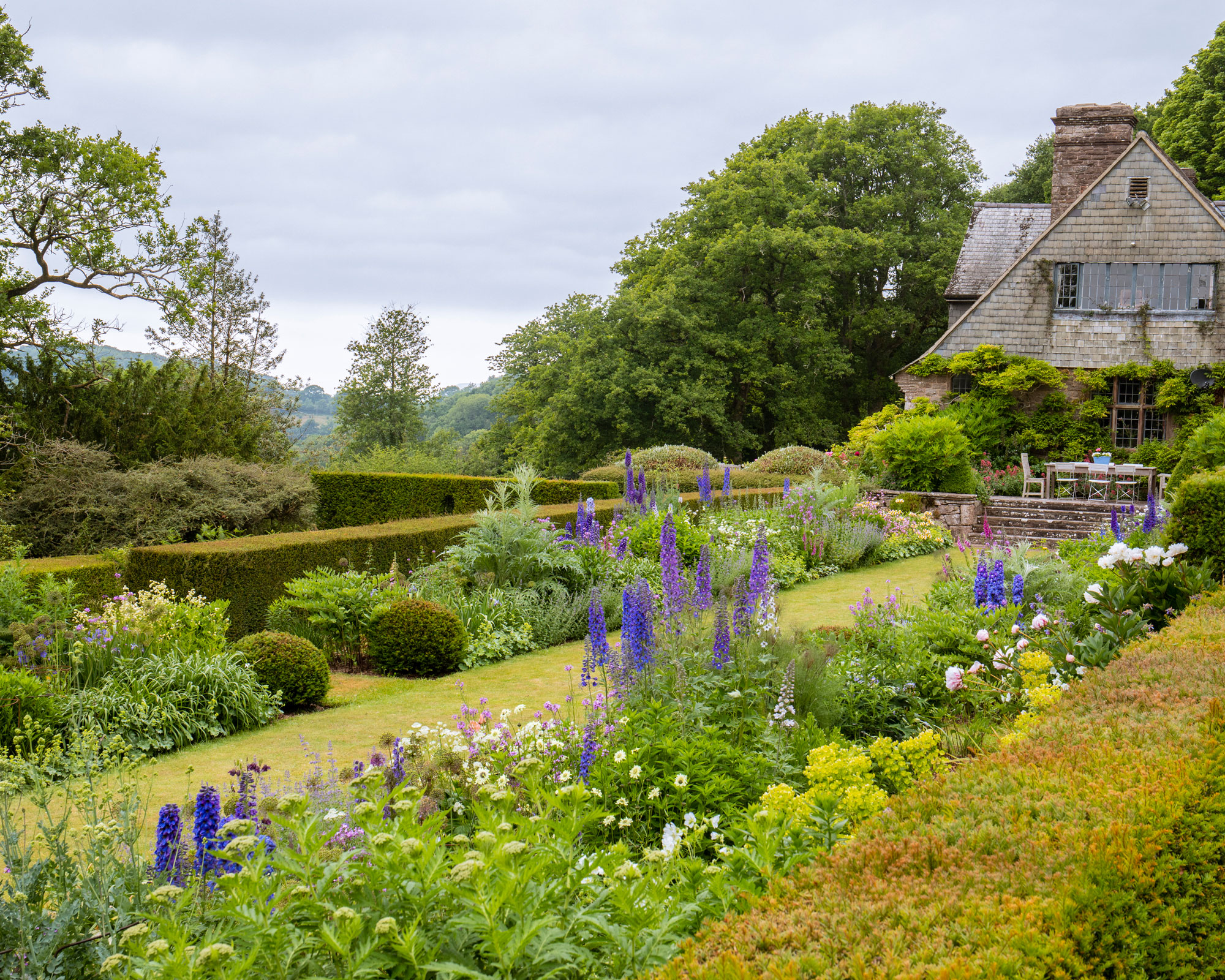
There were no gardens or planting to speak of, but Helena could see the backbones of what had once been something wonderful in the walls and terraces, hedges, and original Edwardian glasshouse. She sourced archive photos of how the garden had looked when it was first laid out in 1923, with grand double herbaceous borders. ‘I saw how marvellous it had been and I was determined to put it all back, and restore the garden to the original design.’
Passionate about doing it properly, she signed up for a garden design and horticulture courses, before studying garden history at university, inspired by the history of High Glanau and the man who created it.
Henry Avray Tipping was an Edwardian writer, editor, architect and garden designer who wrote many books and thousands of influential articles about British country houses and gardens.
Tipping first came to Monmouthshire in 1895, and went on to restore and build several local properties including Mounton House, Mathern Palace and Wyndcliffe Court. He also took on important commissions further afield at places including Chequers, the country residence of successive British Prime Ministers, and Dartington Hall in Devon.
Helena became a fan and then an expert on Tipping, doing her dissertation on him before writing a book, Edwardian Country Life – the Story of H. Avray Tipping. ‘High Glanau was his final home and his most personal house and garden,’ she says. ‘It’s one of the very last of the Arts and Crafts movement.’ Like other properties of this style, it was hand crafted with the best materials, and the house and garden are connected, with all the windows lining up with garden vistas.
2. It indulges in cottage garden planting
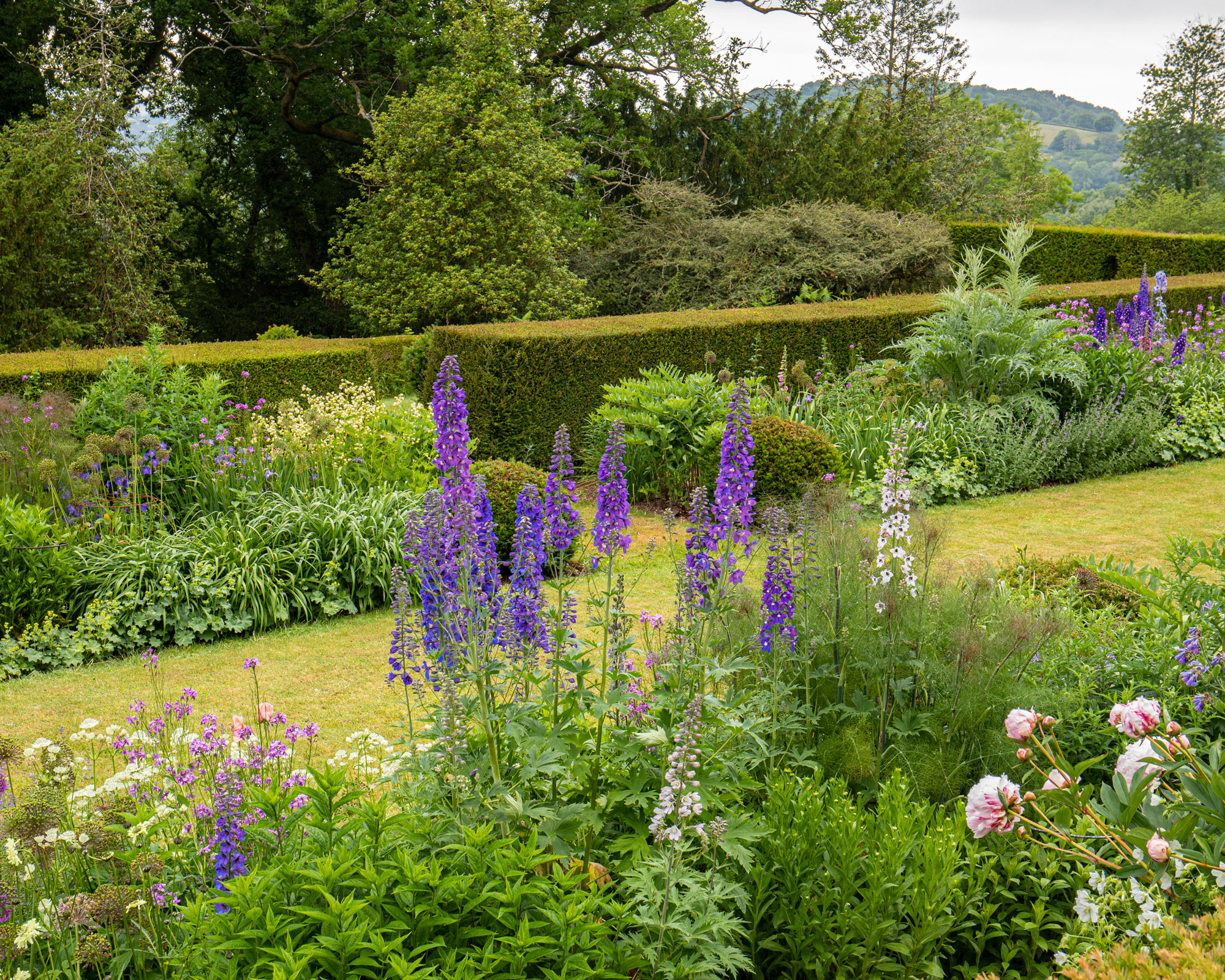
Helena has not slavishly copied Tipping’s original planting, but rather been inspired by it and other Edwardian gardens, to create her own fresh interpretation of this country garden style using modern cultivars.
‘A garden should sit at ease with nature and this does. The formal garden gradually gives way to the wilder woodland and the view, which is spectacular,’ says Helena.
In summer you can stroll down the wide grassy path between to admire the accomplished planting in shades of blue and yellow, with touches of white and pink. There are towering true-blue delphiniums, with irises and catmint; yellow lady’s mantle, euphorbia and mullein; and pale astrantias, giant scabious and achilleas; plus hints of pink from peonies and foxgloves. The show starts in spring with tulips, which are planted in the border in baskets so they can be lifted out after flowering.
They are replaced with summer annuals such as salvias and white cosmos, which extend the season into autumn. The walk ends in a romantic pergola draped in wisteria and rambling roses.
See: Cottage garden ideas – pretty ways to embrace rustic style outdoors
3. It is both formal – and informal
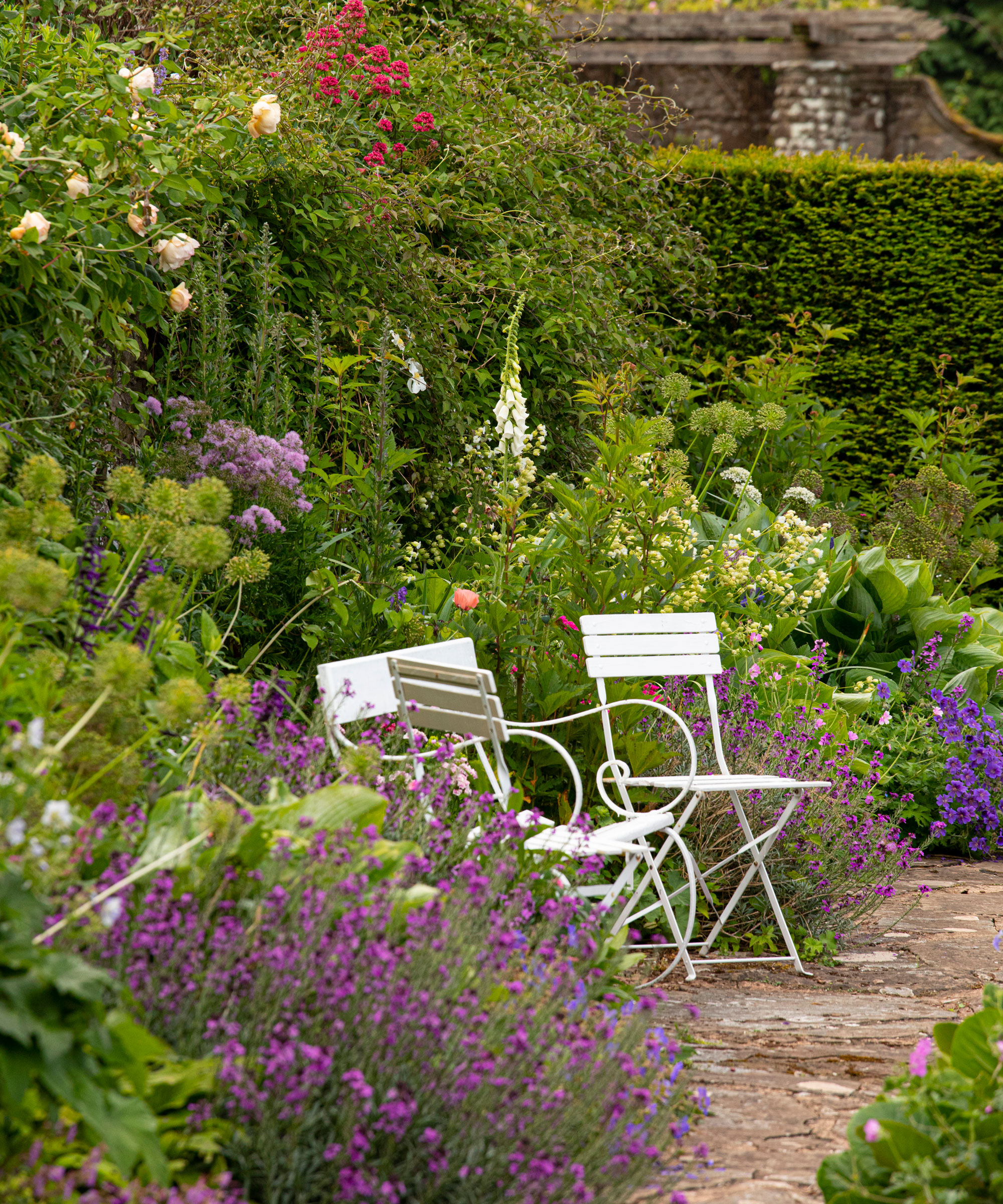
The terraces that step down from the house have a looser, freer feel, with geraniums and poppies jostling with lilies and wild valerian, daisies and shrub roses. At the bottom, beyond the stone walls and steps, the land slopes to an octagonal pond and fountain, and continues to become more relaxed and wilder as it flows on into the scenic countryside.
Further out, there are acres of informal woodland garden with groves of rhododendrons and azaleas in spring, sweeping down to a stream garden with ferns and primulas. Even the driveway is a sight to be seen here, with early drifts of snowdrops and winter aconites giving way to masses of daffodils, tulips, grape hyacinths and hyacinths.
4. It is planted for eating
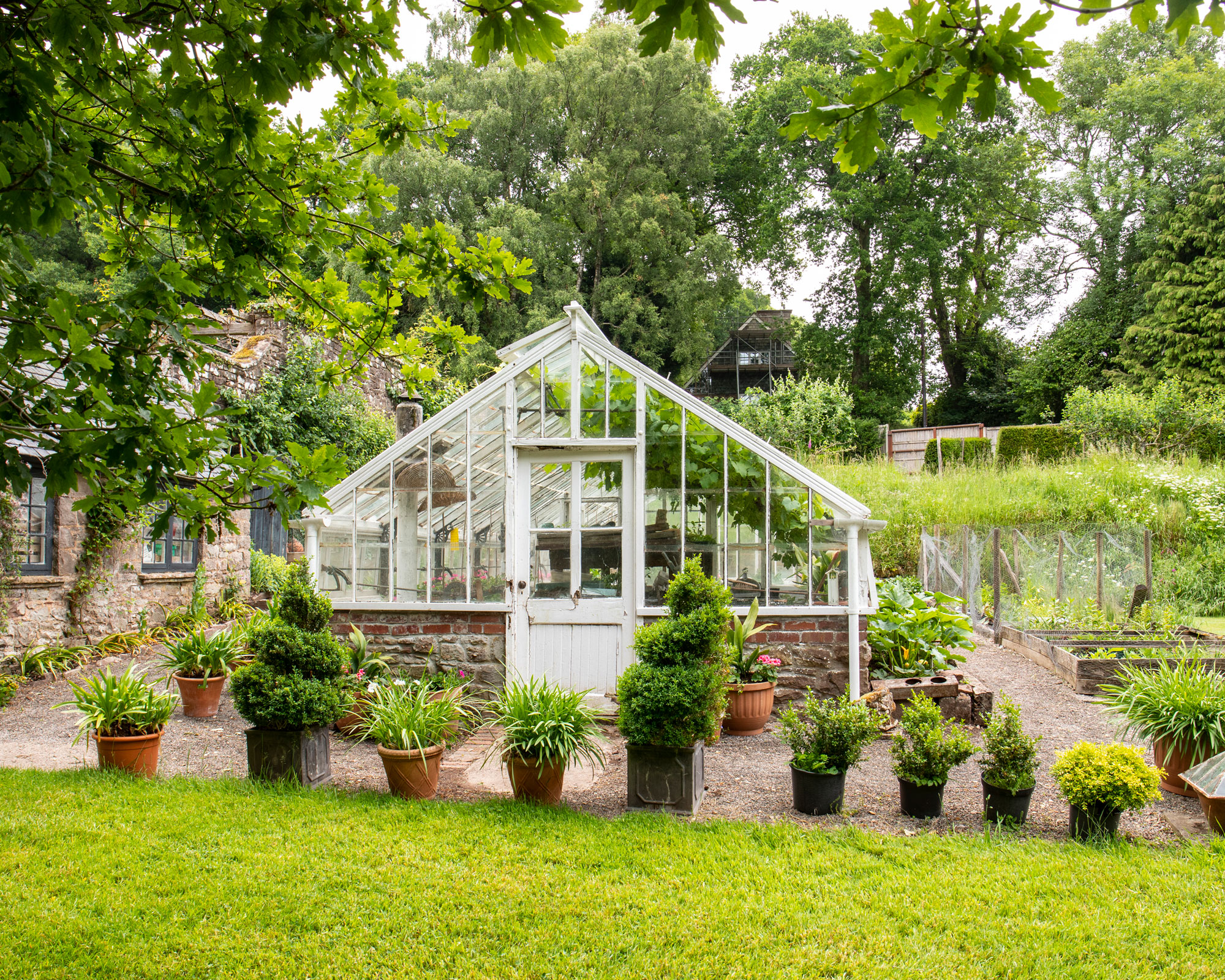
Another naturalistic area that shouts 'country garden' is the orchard, where trees such as crab apples blossom and fruit above camassias, fritillaries and tulips in spring, and long grass with wildflowers in summer.
This lies beside the small but ingenious sloping kitchen garden, which Helena has run along the warm garden wall; and the glasshouse, where grapevines shelter with tomatoes and pots of scented pelargoniums. Helena spends hours inside, sowing and growing and potting on all through March and April, to ensure the best summer show.
See: Kitchen garden ideas – easy ways to get started
5. Its herbaceous borders are planted for unity
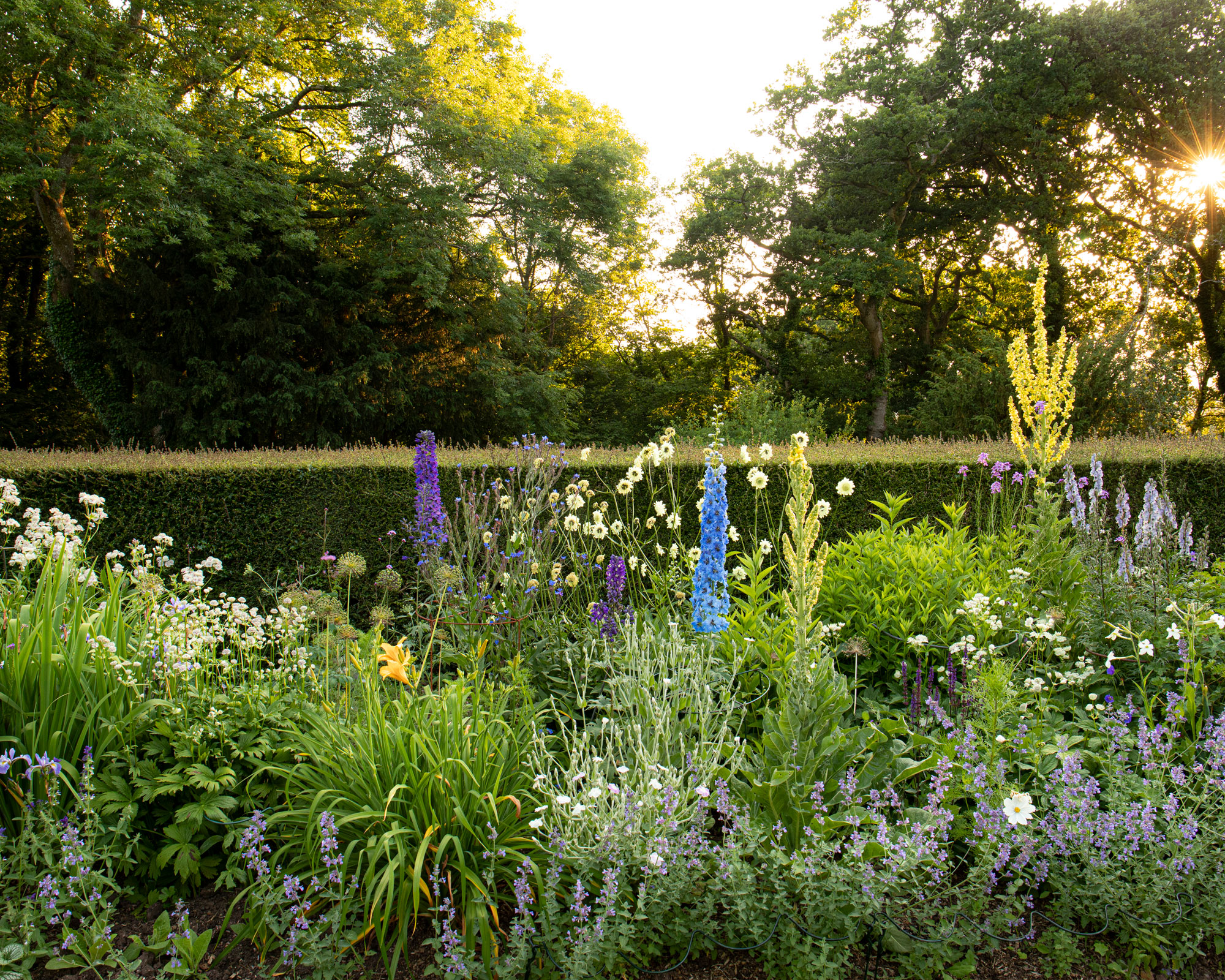
Harmony and unity of color is really important. Decide on your color scheme first, before you order any plants, and stick to it. At Glanau, there are mostly blues and yellows in the double borders, and pinks and mauves in the terrace borders.
‘Nobody really has big double herbaceous borders anymore, but our visitors love them,’ Helena says. ‘They stand on the steps and gasp, because it looks so beautiful.’
Another tip is to get the heights right. Place lower growing plants, like lady’s mantle, at the front, the middle-sized ones, like astrantias, in the centre, and taller things, like delphiniums, towards the back.
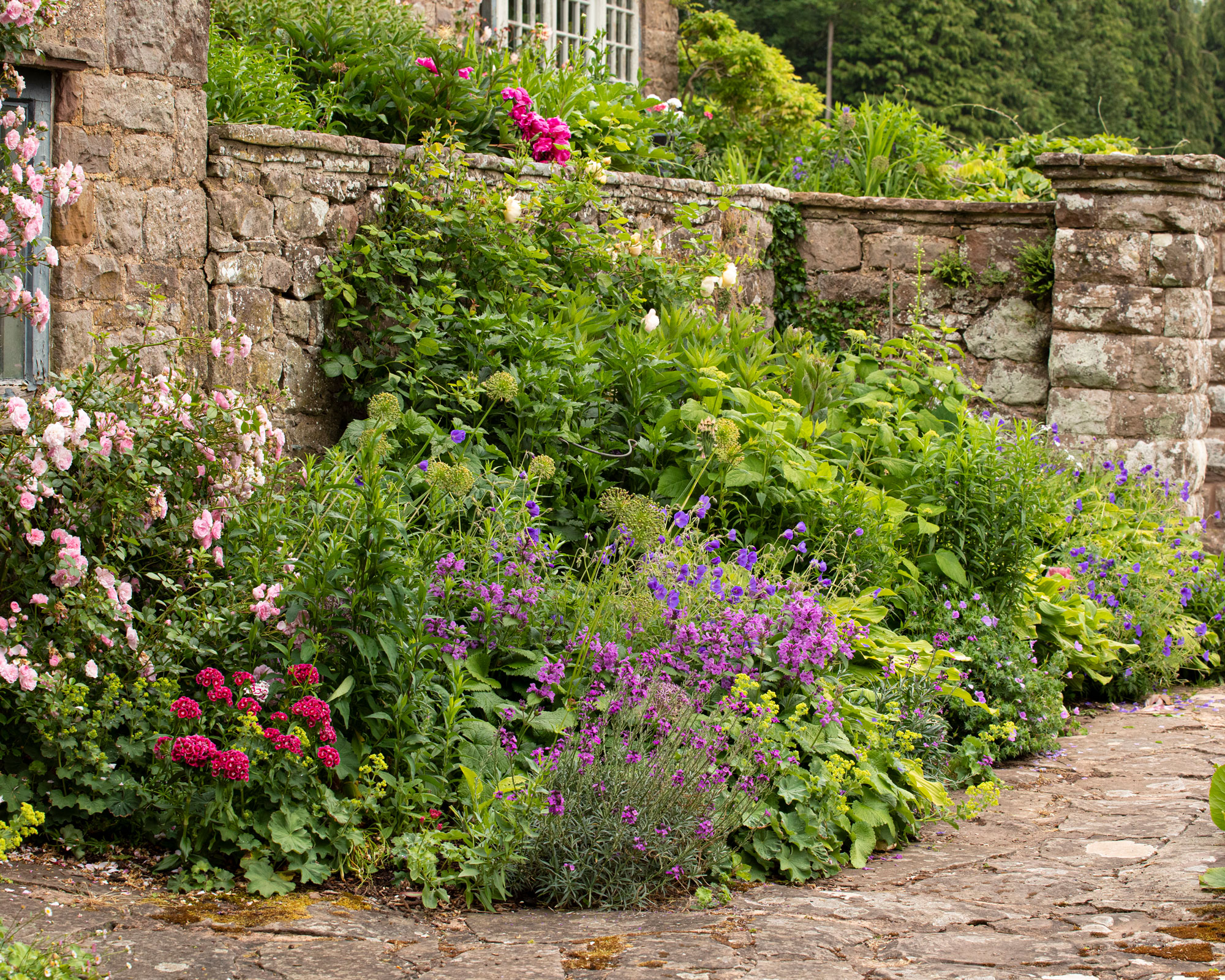
Plant in big stands and drifts, just like Edwardian garden designer Gertrude Jekyll advised, placing several of one plant together. Don’t be tempted to put just one little plant of something in, as the spottiness ruins the look.
Repetition will unify a whole scheme, so use the same plants, or those of similar color or form, several times in the border. 'We repeat tall, architectural cardoons with their large silver leaves for structure, and perennials such as catmint and astrantias throughout, to create a pleasing visual rhythm.'
See: Flower bed ideas – beautiful ways to create floral displays in your garden
Don’t forget about foliage plants, which provide a good green base. 'I use hostas, Brunnera macrophylla ‘Jack Frost’ and lady’s mantle,' says Helena.
It’s a lot of work, but Helena is in no doubt that it is absolutely worth it. ‘Nobody really has big double herbaceous borders anymore, but our visitors love them,’ she says. ‘They stand on the steps and gasp, because it looks so beautiful.’
Original interview by Stephanie Mahon
Sign up to the Homes & Gardens newsletter
Design expertise in your inbox – from inspiring decorating ideas and beautiful celebrity homes to practical gardening advice and shopping round-ups.
With over 30 years of working in journalism on women's home and lifestyle media brands, Rhoda is an Editorial Director, Homes Content, at Future. Over time, Rhoda has worked on the entire homes and gardens portfolio including Homes & Gardens, Country Homes & Interiors, Livingetc, Ideal Home, Style at Home, Woman & Home, 25 Beautiful Homes, Amateur Gardening and Easy Gardens. She was also editor of Country Homes & Interiors for 14 years, leading it across print and creating the blog Country Days. She has also worked at Woman’s Weekly, Family Circle and Practical Parenting.
-
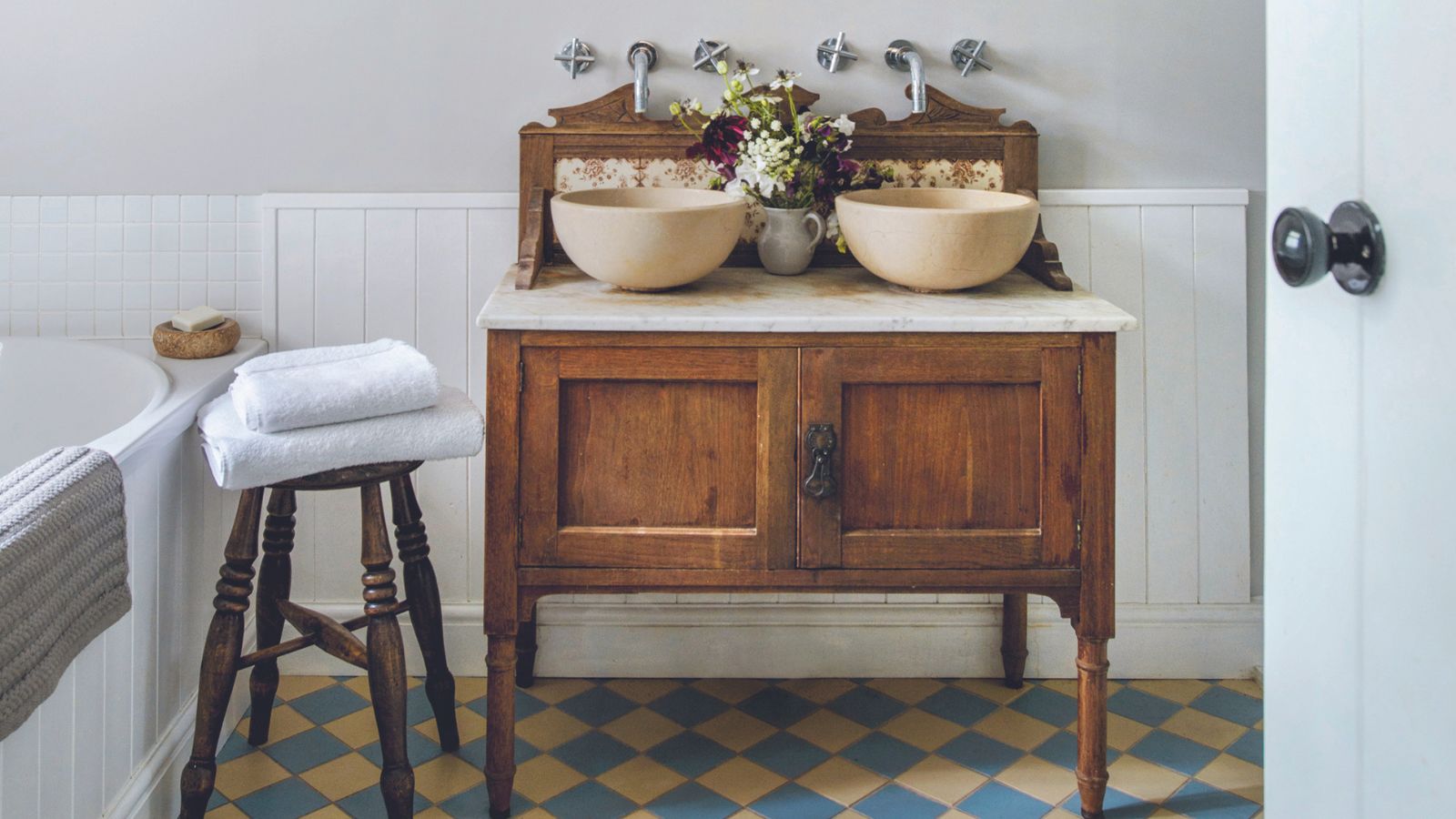 I'm 5ft2 and this telescopic scrubber safely and easily banished mold and grime in even the hardest-to-reach areas of my bathroom in less than 15 minutes
I'm 5ft2 and this telescopic scrubber safely and easily banished mold and grime in even the hardest-to-reach areas of my bathroom in less than 15 minutesMy bathroom has never looked better thanks to this handy $16 two-in-one tool from Joseph Joseph
By Ottilie Blackhall Published
-
 Everyone is obsessed with vintage tiles right now – bring the nostalgic charm of this classic design feature into your home with our 5 design ideas
Everyone is obsessed with vintage tiles right now – bring the nostalgic charm of this classic design feature into your home with our 5 design ideasHonor the past with our favorite ways to decorate with vintage tiles, as suggested by interior design experts
By Eleanor Richardson Published